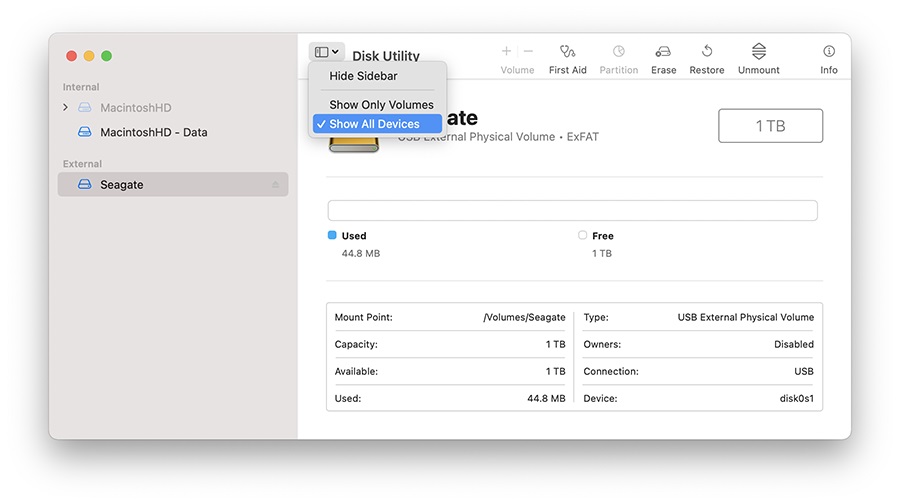


#THIRD PARTY DISKY UTILITY FOR MAC OS INSTALL#
The great advance in performing a clean install of macOS came in later releases of Catalina, since which the macOS installer has been able to link a fresh System volume with an existing Data volume, something which previously often failed, and created multiple Data volumes with names like Macintosh HD – Data and Macintosh HD – Data – Data.Īpple’s current solution to repairing or changing boot Volume Groups is to reinstall macOS with the single correctly-named Data volume present in the container. This makes a clean install simpler and less confusing, although it also makes it easier for users to inadvertently erase a wanted Data volume, when all they intend to do is create a new System volume which is linked to an existing Data volume. One significant improvement in Big Sur is the ability of Disk Utility to erase a complete Volume Group in a single operation. Although its command tool companion, diskutil, offers a few more facilities, such as the creation of APFS volumes with specified roles, even there the user has comparatively little to work with APFS’s extensive feature-set. These include volume roles, Volume Groups, firmlinks, and the copying of storage blocks into backups.ĭespite those, Disk Utility in Big Sur has changed precious little, and can’t for example swap the Data volume in a boot volume group. By the time it has reached version 1677.60.23 in Big Sur, it has grown many new features, of which most support the new Sealed System Volume, and Time Machine backups to APFS volumes.

Over the last few years, since the introduction of APFS, we’ve become ever more reliant on it, but it hasn’t always delivered the goods.ĪPFS has developed rapidly since we first started getting to know it in High Sierra. The day when you can’t rely on it to format disks correctly we’re all doomed. Disk Utility is the least glamorous and most critical of all the apps bundled in macOS.


 0 kommentar(er)
0 kommentar(er)
